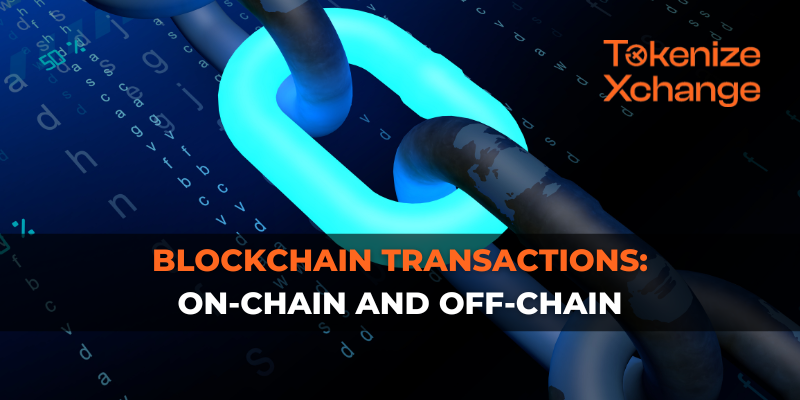Cryptocurrency transactions often occur through two primary methods: on-chain and off-chain transactions. These methods determine how data is processed and recorded within the blockchain network.
On-chain transactions involve the direct recording of transfer actions on the blockchain, the decentralized public ledger that underpins most cryptocurrencies. Conversely, off-chain transactions occur outside this main blockchain network, enabling faster processing times and reduced fees but potentially introducing centralized elements.
On-Chain Transactions
On-chain transactions refer to transactions that are conducted directly on the blockchain network. For example, when you send cryptocurrencies like Bitcoin or Ethereum from one wallet to another, and this transaction is validated, confirmed, and recorded on the respective blockchain, it is referred to as an on-chain transaction.
The process involves:
- Validation: Transactions are verified by nodes (computers) in the blockchain network using consensus mechanisms like Proof of Work (PoW) or Proof of Stake (PoS).
- Inclusion in Blocks: Once validated, transactions are grouped into blocks and added to the blockchain in a sequential and irreversible manner.
- Publicly Visible: On-chain transactions are transparent and accessible to anyone. You can view transaction details using blockchain explorers.
Pros:
- High Security: Transactions on the blockchain benefit from robust crypto security measures, ensuring resistance to fraud and tampering.
- Immutability: Once recorded on the blockchain, transactions become immutable and nearly impossible to alter, fostering trust in the system.
- Transparency: The public nature of on-chain transactions allows anyone to inspect and verify transaction history, promoting accountability and trust within the network.
Cons:
- Slower Processing: On-chain transactions often require extensive verification processes, leading to longer confirmation times, particularly during network congestion.
- Higher Fees: The verification and inclusion of transactions on the blockchain can involve fees, which might be higher during periods of increased network activity.
- Scalability Challenges: As blockchain networks grow, scalability becomes a concern, potentially leading to congestion and slower transaction processing.
Off-Chain Transactions:
Off-chain transactions occur outside the main blockchain network. They involve moving assets or information without executing every step directly on the blockchain. Instead, these transactions leverage secondary systems or protocols built on top of the blockchain.
Some characteristics of off-chain transactions:
- Speed and Scalability: Off-chain transactions often offer faster processing times and increased scalability compared to on-chain ones. This speed is beneficial for microtransactions and high-frequency trading.
- Reduced Fees: As they bypass the main blockchain, off-chain transactions can have lower fees or even be feeless, making them cost-effective for smaller transfers.
- Privacy: Off-chain transactions can provide enhanced privacy by executing outside the public ledger, offering a degree of confidentiality.
Pros:
- Speed: Off-chain transactions offer rapid processing, enabling quick transfers of assets or data without the latency associated with on-chain transactions.
- Scalability: By operating outside the main blockchain, off-chain solutions can handle a higher volume of transactions, addressing scalability issues.
- Potentially Lower Fees: These transactions can reduce or eliminate fees associated with on-chain transactions, making them more cost-effective.
Cons:
- Centralization Risks: Some off-chain solutions might introduce centralization elements, potentially compromising the decentralized nature of cryptocurrencies.
- Reduced Transparency: Off-chain transactions may lack the same level of transparency as on-chain transactions, potentially raising concerns about accountability.
- Dependency on External Systems: Reliance on secondary systems or protocols for off-chain transactions introduces dependencies that could be vulnerable to failures or security breaches.
The choice between on-chain and off-chain transactions involves trade-offs. On-chain transactions prioritize security and transparency but might suffer from slower speeds and higher fees. In contrast, off-chain transactions emphasize speed and scalability while potentially sacrificing some aspects of decentralization and transparency.
Balancing these trade-offs is important when deciding on the most suitable approach. Considerations of security, speed, scalability, fees, and the desired level of decentralization guide the selection between on-chain and off-chain transactions, ensuring alignment with specific needs and priorities.
